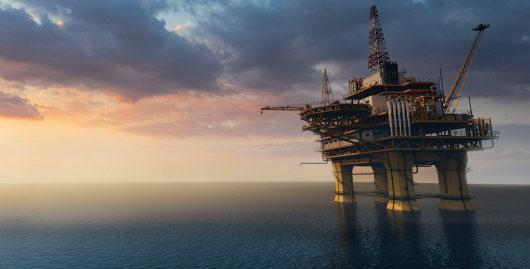
17 minute read
Report Gas production in Africa is expected to rise significantly in coming years with new supply originating from Tanzania, Mozambique, Senegal, Mauritania and South Africa.
MAXIMISING THE VALUE OF LOW-CARBON GAS
The African continent is endowed with abundant natural gas (natgas) reserves, but upstream activity is far below a level commensurable with the region’s resource base. Moin Siddiqui, economist, assesses prospects for the development of the continent’s gas resources.
FOR MANY YEARS, Africa was largely ignored by international players as exploration/production (E&P) companies specifically targeted crude oil – thus natgas was (and still is) mostly vented or flared on sites (some part being re-injected into ageing oilfields to enhance their productivity), despite serious environmental impacts.
At the end of 2019, Africa’s proven natgas reserves were reported by British Petroleum (BP) at 14.9 trillion cubic metres (tcm) excluding colossal offshore finds in East Africa. The International Energy Agency (IEA) in its Special Focus on Africa (2019) estimated the region’s remaining technically recoverable gas resources at some 100 tcm – equivalent to 13% of global natgas resources.
Around 41.5bn barrels of oil equivalent (bboe) were discovered across Africa in the last decade. Natgas dominates over liquids, with around 73% of total discovered resource over this period, according to Norway-based energy consultancy Rystad Energy. The twin impact of low energy prices and Covid-19 recession forced major players to reduce their investment in gas (E&P) projects across all continents by 25% in 2020 – barely 20 oil and gas wells were drilled in Africa.
North and West Africa remain relatively matured in terms of exploration activity, while East and Southern Africa have been less explored and productive. Stranded gas (i.e., discovered gasfields that remain unusable for physical, logistical and economic reasons) is a target for future exploration.
Around 41.5bn barrels of oil equivalent (bboe) were discovered across Africa in the last decade.
New exploration hotbeds
Africa’s southwestern coast is home to perhaps the most globally anticipated wildcat spots following French major Total’s deep-water discovery of Brulpadda (South Africa) earlier in 2019 containing 1 Bboe of gas condensate resources – representing one-fifth of the world’s entire gas discoveries in 2018. Total also made a second significant find on the Luiperd prospect at depths of about 3,400 metres and encountered 73m of net gas condensate pay, making it even larger than the reservoir at Brulpadda.
Potential activity in South Africa’s unconventional gas plays where enabling legislation is making some progress is encouraging. The US Energy Information Administration (EIA) estimates South Africa holds 390 tcf of technically recoverable shale gas resources – even if actual extractable gas is half that amount, shale gas could be a game-changer for South Africa, which relies heavily on gas imports.
In Zimbabwe, the US-based Invictus Energy plans a wildcat drilling programme in late 2021 on the Mzarabani-1 prospect (Rufunsa basin) at depths of 4,000m and aims to confirm prospective resources of 4.5 tcf. The operator estimates cumulative resources at around 9.25 tcf gas plus 294mn barrels of liquids. Mzarabani-1 will be Zimbabwe’s second-ever wildcat since 2018.
The Senegal-Mauritanian maritime border (West Africa) has attracted keen interest over frontier discoveries. In total, the GreaterTortue/Ahmeyim acreage holds around 3.2 tcm of recoverable natural gas – split roughly half between Senegal and Mauritania (sufficient for 30-50 years production). BP’s Orca-I gas Mauritanian find was both the deepest and largest in Africa in 2019, and fifth-largest in the past decade. Rystad Energy estimates Orca-1 holds around 1.3 bboe of recoverable resources.
The prolific Rovuma basin –
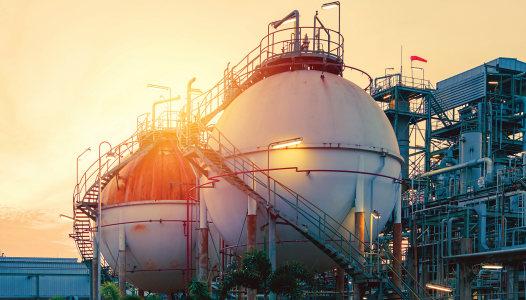
straddling maritime borders of Mozambique and Tanzania is one of the globe’s most promising new frontiers of gas production with estimated >150 tcf of proved reserves (mostly in Mozambican territorial waters). Mozambique enjoys Africa’s biggest untapped gas potential. It currently has three liquefied natural gas (LNG) projects – Mozambique LNG (12.88mn tonnes per annum, 2023), Coral South floating LNG (3.4mntpa, 2023) and Rovuma LNG (15.2mntpa, 2024), which are covered by long-term offtake agreements with Royal Dutch Shell, China National Offshore Oil Corp; and Électricité de France S.A.
Mozambican gasfields could generate some US$100bn over the next 25 years. However, gas resources are in the remote and sparsely populated north where security risk casts a shadow on long-term investments. In neighbouring Tanzania, a total of 16 discoveries were made in 2010-2015, which boosted aggregate gas reserves eightfold to more than 40 tcf.
But extracting offshore gas remains a challenge, for instance, Tanzania’s largest gas find Zafarani was drilled in water depth of 2,400m, whilst Rovuma fields in offshore Mozambique are within the 1,000-1,500m range. Thus, higher extraction costs of ultra-deepwater fields puts Tanzania at a competitive disadvantage to Mozambique, although security is better.
Commercialisation of gas
Global natgas demand is projected to exceed both oil and coal by 1.6% each year for the next five years (IEA), as countries seek to meet rising energy demand and wean their industrial and power sectors off dirtier diesel fuels.
Africa’s emerging gas sector offers ample opportunities, including gas-fired electricity generation – scope for independent power producers (IPPs); midstream gas infrastructure (pipelines, gas processing and transportation) to monetise recent discoveries; engineering and construction of LNG plants for both export and import; developing gas-based industries (e.g. methanol, fertilisers, urea); and updating local skills and knowledge transfer from foreign energy companies.
In the Africa Energy Outlook 2021 report, the African Energy Chamber (AEC) forecasts increased gas monetisation fuelled by decarbonisation and industrialisation. “Only stronger monetisation of gas at home could justify using Africa’s gas reserves for industrial and power generation purposes instead of burning and wasting them. Africa would not only reduce its carbon intensity, but also become more attractive to global investors seeking to allocate capital to the least carbon intensive projects possible.”
Monetising gas also supports climate-resilience goals (aligned with the Paris Agreement) given the continent’s excess flaring intensities. While Africa benefits from conventional and easy to extract hydrocarbons, the inability to prevent gas flaring makes Africa the least carbon efficient continent at around 31 bcm CO2 emitted per barrel of oil equivalent produced, according to AEC.
Nigeria has yet to capitalise fully on its potential: proved reserves total 200 tcf with a further 600 tcf of estimated unproven reserves, according to the Nigerian National Petroleum Corporation. However, efforts to reduce flaring are making notable progress. According to the Global Gas Flaring Report (2021), the amount of gas flared in Nigeria fell 70% in 2020 to just 7 bcm – hence increasing marketed gas production. In 2018, the value of gas flared was estimated at US$1.8bn.
Some big-ticket projects are being implemented, for instance, Seplat Petroleum's planned US$700mn gas joint venture with the state-owned Nigeria Gas Company in Imo state; and the Assa North-Ohaji South plant will process wet gas from Niger Delta oilfields with a capacity of 300mn ft/day. The latter is one of seven projects promoted by the government in 2018 as critical to tackling a looming supply gap. They were fast-tracked to provide 3.4bn ft/d of gas to provide feedstock for 15GW of generation.
Africa’s emerging gas sector offers ample opportunities, including gasfired electricity generation.
New supply
Gas production in Africa is expected to rise significantly in coming years with new supply originating from Tanzania, Mozambique, Senegal, Mauritania and South Africa (the IEA envisages gas output doubling between 2018 and 2040). The region could become a key supplier to the global gas market. The existing LNG capacities (exclusively located in West Africa) amount to 33 mtpa.
The likely first phase of LNG projects in Mozambique/Tanzania and Senegal/Mauritania will increase sub-Saharan Africa’s total capacity to 60-75 mtpa over the next decade. Depending on unprecedented capital investment, East Africa’s reserve base could theoretically support an output of up to 100 mtpa (the equivalent of Qatar’s current production).
The IEA report Special Focus on Africa concluded “Recent major discoveries present a renewed opportunity for gas to support Africa’s energy and industrial development. But that depends on countries with gas putting in place well-articulated strategies to turn discoveries into production and to build infrastructure to deliver gas to consumers cost-effectively in a competitive global LNG market.”
Gas-to-power initiatives across Africa will underpin growth in gas production in the near future. Gas monetisation remains a major regional priority.
EGYPT IS MORE RESILIENT
Exploration activities are paying dividends and are key to Egypt’s oil and gas expansion as other industries falter, says Robert Daniels.
AFTER A CHALLENGING 2020, Egypt’s non-oil sectors have deteriorated as the pandemic continues to wreak havoc on the economy. However, the oil and gas industry has seen a flurry of positive activity in the new year, following positive developments in 2020, which have served to spark hope for its future security and growth.
As COVID-19 cases in Egypt continued to rise at the end of 2020, non-oil businesses witnessed a decline in operating conditions, reflecting falls in both output and new orders as client demand was reduced, according to an IHS Markit report. The IHS Markit Egypt Purchasing Managers’ Index, a composite gauge to provide a snapshot of operating conditions, registered 48.2 in December, below the 50.0 mark, indicating moderate deterioration of the non-oil sector. The report also noted that employment cuts accelerated at the fastest rate seen in four months.
While other sectors were struggling, the Egyptian oil and gas sector marked the turn of the year with a spate of positive announcements encouraging expansion and development.
Exploration in the Mediterranean and Red Sea
The Egyptian Ministry of Petroleum and Mineral Resources announced a

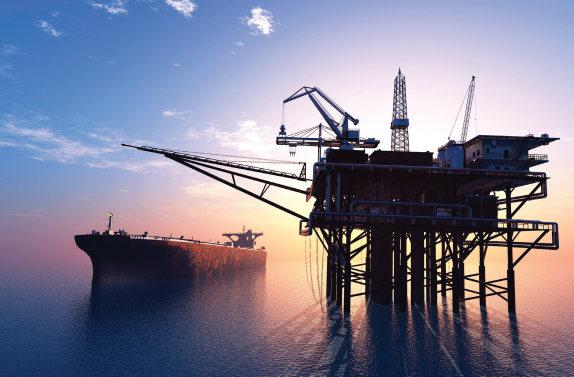
minimum investment of US$1.4bn to search for petroleum and natural gas. International and Egyptian companies including Total, Shell, Tharwa, Chevron, Kuwait Foreign Petroleum Exploration Company (KUFPEC), and ExxonMobil Egypt have signed 12 agreements to drill in 23 separate locations across nine regions in the Mediterranean Sea, and three in the Red Sea.
One such area is the North Ras Kanayis Offshore block, located in the Herodotus Basin, which covers an area of 4,550 sq km, extending 5-150 km from the shore with water depths ranging from 50-3,200 m. Total is leading a consortium to explore the block, which will consist of a 3D seismic campaign being carried out within three years. Total will hold a 35% stake in the consortium, which also comprises Shell (30%), KUFPEC (25%), and Tharwa (10%).
‘‘Total is pleased to further strengthen its Eastern Mediterranean position as an operator of this exploration and production agreement,’’ commented Kevin McLachlan, senior vice president of exploration at Total. “We are excited by the exploration potential of the North Ras Kanayis Offshore block. It reinforces our presence in Egypt, following a gas discovery made in July 2020 with the Bashrush well on the North El Hammad licence, to be developed through a tie-in to nearby existing infrastructure.”
Eni discovery in the Western Desert:
This fresh phase of exploration came soon after Eni announced the successful discovery of oil through the Arcadia 9 well in the Western Desert. Drilled on the Arcadia South structure, located 1.5 km south of the main Arcadia field already in production, the well encountered an 85 ft oil column in the Cretaceous sandstones of the Alam El Bueib 3G formation. Following this discovery, two further development wells, Arcadia 10 and Arcadia 11, have been drilled both of which also encountering respective oil columns. The new discovery will add 10,000 bpd to Eni’s gross production in the Western Desert.
Egypt is focussing more emphasis on developing its oil and gas sector.
United Oil and Gas PLC spudding commences:
Also targeting the Alam El Bueib reservoirs at a depth of 3,6003,950 m, the United Oil and Gas PLC has begun spudding the ASH-3 vertical well. This comes with high hopes after the ASH-2 production well, which came onstream at the beginning of 2020, has produced more than 1mn bbl to date, with current rates of 4,500bpd. The CEO of United Gas and Oil PLC commented, “It is equally pleasing to be back drilling in Egypt again, after the deferral of the majority of the 2020 drilling programme due to the low oil price environment, and we look forward to the drilling of further wells as part of our 2021 campaign.”
The ability of the Egyptian oil and gas market to buck the trend of economic decline has been particularly reflected in its continued success with oil exploration. The Egyptian Ministry of Petroleum and Mineral Resources reported that throughout 2020, 47 crude oil and 15 natural gas reserves were found across Egyptian territory, which amounted to a 13% rise in the discovery of oil compared to the previous year.
While other sectors in Egypt are clearly struggling with the effects of the pandemic, it appears the oil and gas industry is seeking, instead, to expand production and bolster profits, with a corresponding positive impact on Egypt’s economy and its ambitions to become a regional energy hub.
BP announces gas production from Raven field
BP has announced gas production from Raven field, the third stage of its major West Nile Delta (WND) development off the Mediterranean coast in Egypt.
The approximately US$9bn WND development includes five gas fields across the North Alexandria and West Mediterranean Deepwater offshore concession blocks in the Mediterranean Sea. BP and its partners, working with the Ministry of Petroleum, have developed the WND in three stages.
Raven follows the Taurus/Libra and Giza/Fayoum projects, which started production in 2017 and 2019 respectively. It produces gas to a new onshore processing facility, alongside the existing West Nile Delta onshore processing plant.
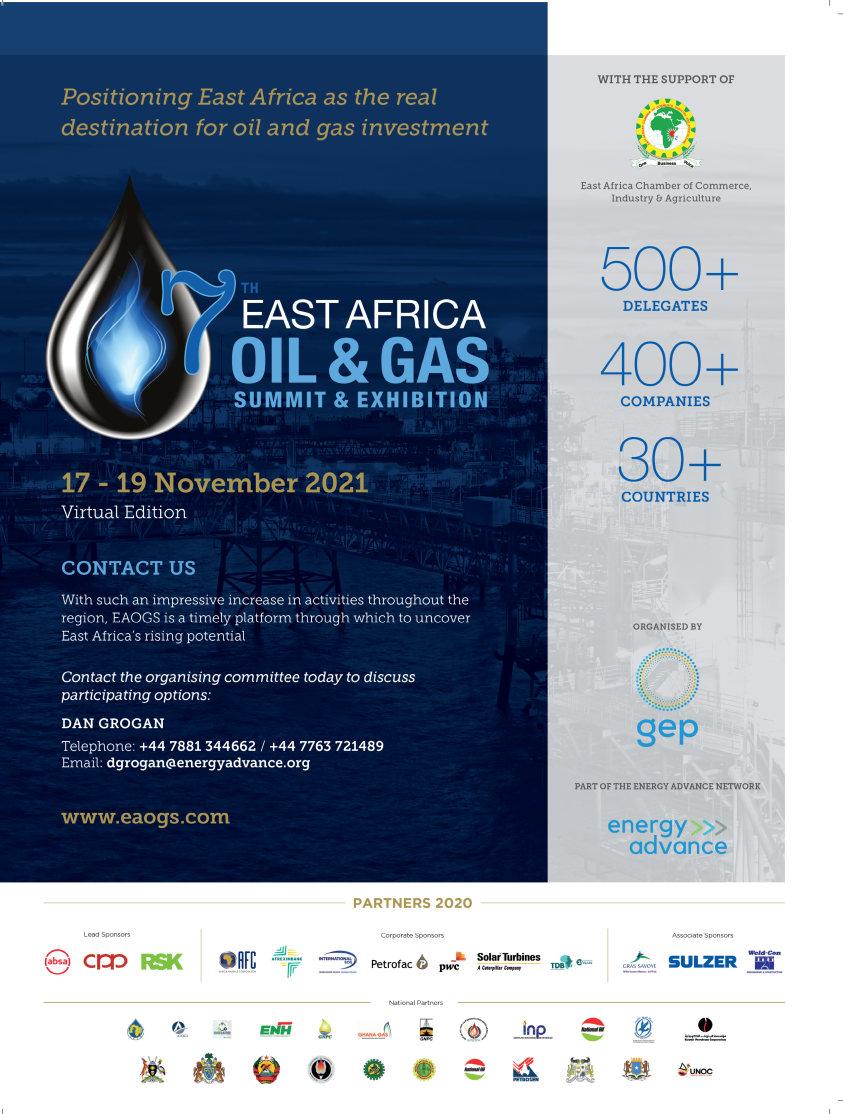
Many companies are adopting integrated strategies to deliver real-time and targeted training for the oil and gas workforce.
ANUMBER OF AFRICAN countries are encouraging local content requirements as a means to boost the incountry economic value chain. Africa is seeing joint collaborations and partnerships that aim to expand natural gas and oil industry standards and initiatives.
One of the most recent is, in March 2021, the American Petroleum Institute (API) and the African Energy Chamber (AEC) signed a MoU to oil and gas industry standards. The MoU is expected to facilitate collaboration between API and AEC members in several areas, including development of training programmes and seminars; coordination, collaboration and sharing of the natural gas and oil industry’s good practices for environmental, health, safety, security and sustainability.
The importance of upskilling oil and gas workforces has been highly acknowledged too by the Senegalese President HE Macky Sall who is seeking to ensure a swifter progression of oil and gas projects in the country. During a virtual conference held with the Council of Ministers in February 2021, HE Sall urged government to support the establishment of the National Institute of Oil and Gas, as well as formalise regulations related to education and training in the sector, in a bid to develop human capital and facilitate knowledge, skills and technology transfer.
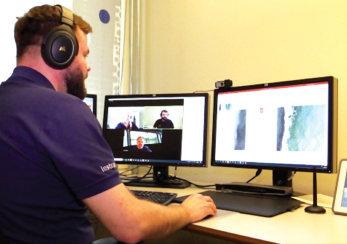
Image Credit: Kongsberg Maritime
Kongsberg Maritime instructors conduct courses in real time in virtual classrooms.
Trends in Africa’s oil and gas recruitment
Jozsef Marton, managing director, London, Preng & Associates, the global energy search leader, spoke about the top five sectors in oil and gas which will see more recruitment drive in the coming days. According to him, in the upstream segment, production operations will be a top sector in driving recruitment. “Every company needs to make their production as efficient as possible and as high as possible. Then comes financial skillsets. While doing deals or partnership agreements, ensuring that right commercial agreements put in place is going to be critical to make sure companies can make money. Third one is managing government relationships. This is going to be critical because due to COVID-19, a lot of governments, particularly in Africa and other emerging markets, are put under pressure. Companies need to find people who can manage that pressure and ensure relationships are strong and positive. The fourth segment is attracting the next generation leaders.”
“In the next five years, a lot of people are going to retire from the industry or can not be in the leadership roles. A big challenge is how to replace those individuals. Hence, the competition for talent is going to increase. The fifth call is around the ESG agenda. People are still working out what ESG means for a particular company and how it can help improve performance and attract new investment. Therefore, finding people who really understand those areas are going to be crucial.” gas training and standards is enormous. Energy services company Wild Well Control offers WellSharp Live: an IADCapproved distance learning training delivery option for all WellSharp Drilling and Well Servicing well control courses. WellSharp Live has been developed as a temporary solution to support ongoing training and learning in the oil and gas industry during the COVID-19 crisis.
The option allows for instructor-led delivery, an interactive learning environment, and real-time quality monitoring throughout the course. Online proctoring services will also be utilised during course assessments. When normal operations resume, WellSharp Live will revert to instructor-led, in-room classes as the only delivery option for WellSharp training.
In addition to this, Norwegian technology enterprise Kongsberg Maritime has announced an integrated strategy to deliver remote, targeted training for its customers. Providing this service through digital platforms reduces travel, cost, time away from home and climate footprint. Three products – Remote Training, e-Learning and K-CAT (Kongsberg Competence Assessment Tool) –combine to ensure that vessel crews can fully benefit from KONGSBERG’s expertise from the convenience and safety of their homes or offices.
BRINGING CONNECTIVITY TECHNOLOGY FOR ENERGY SUPERPOWERS
For more than 10 years, Speedcast has been developing and implementing telecommunications and technology systems that are vital to construction, operation and maintenance for workers across the region.
OVER THE PAST 15 years, major oil and gas companies have entered Mozambique to develop the vast infrastructure needed to turn gas in the sea bottom into LNG product. Offshore platforms, pipelines, processing and storage facilities, export terminals and living facilities for staffall support the country’s economy-changing transformation into the world’s fourth largest exporter of LNG. As with all energy and drilling operations around the world, secure, reliable communications is essential to ensure safety and a steady pace of operations. Within Mozambique, however, the infrastructure needs to be built, since this is a green region ripe with unchartered opportunity for
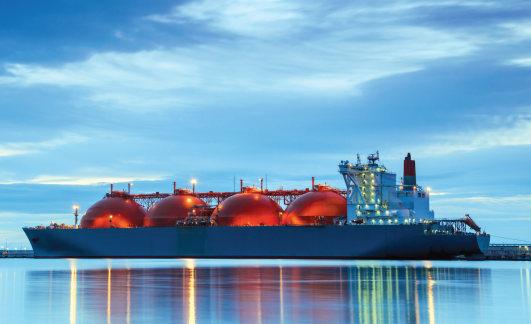
Speedcast is implementing strict actions to ensure a safe work environment in this challenging landscape.
major energy projects.
To obtain connectivity in an area with limited or no landbased communications infrastructure in place, local businesses and residents rely on multi-megabit VSAT capacity to connect to the rest of the world. For Rovuma Basin projects, satellite is an interim solution that will eventually transition to backup and disaster recovery networks, replaced by new subsea fiber cable: a diverse, self-healing, faulttolerant design that will provide highly secure communications, analytics, network management and optimisation.
These projects do more than support major operators’ plans to implement LNG. By hiring thousands of local workers and partnering with local IT and telecommunications businesses to help bring systems and services online, the regional economy’s growth is thriving, and these opportunities are giving local people a stake in the energy future of the nation.
Speedcast’s expertise in digitalisation enables use of the best available technologies to support pioneer operators as they focus on building Mozambique’s energy exploration operations, and as one of the only telecommunication service providers in the region with a local entity (Speedcast Mozambique Lda.) as well as local licenses to provide internet and voice services, the process for doing business in Mozambique is simplified. As with all energy operations around the world, strict attention to health and safety regulations are top priority to ensure a safe work environment in this challenging landscape. Speedcast is backed by a global field support team with a demonstrated track record of success in both established and newly-developing regions.







